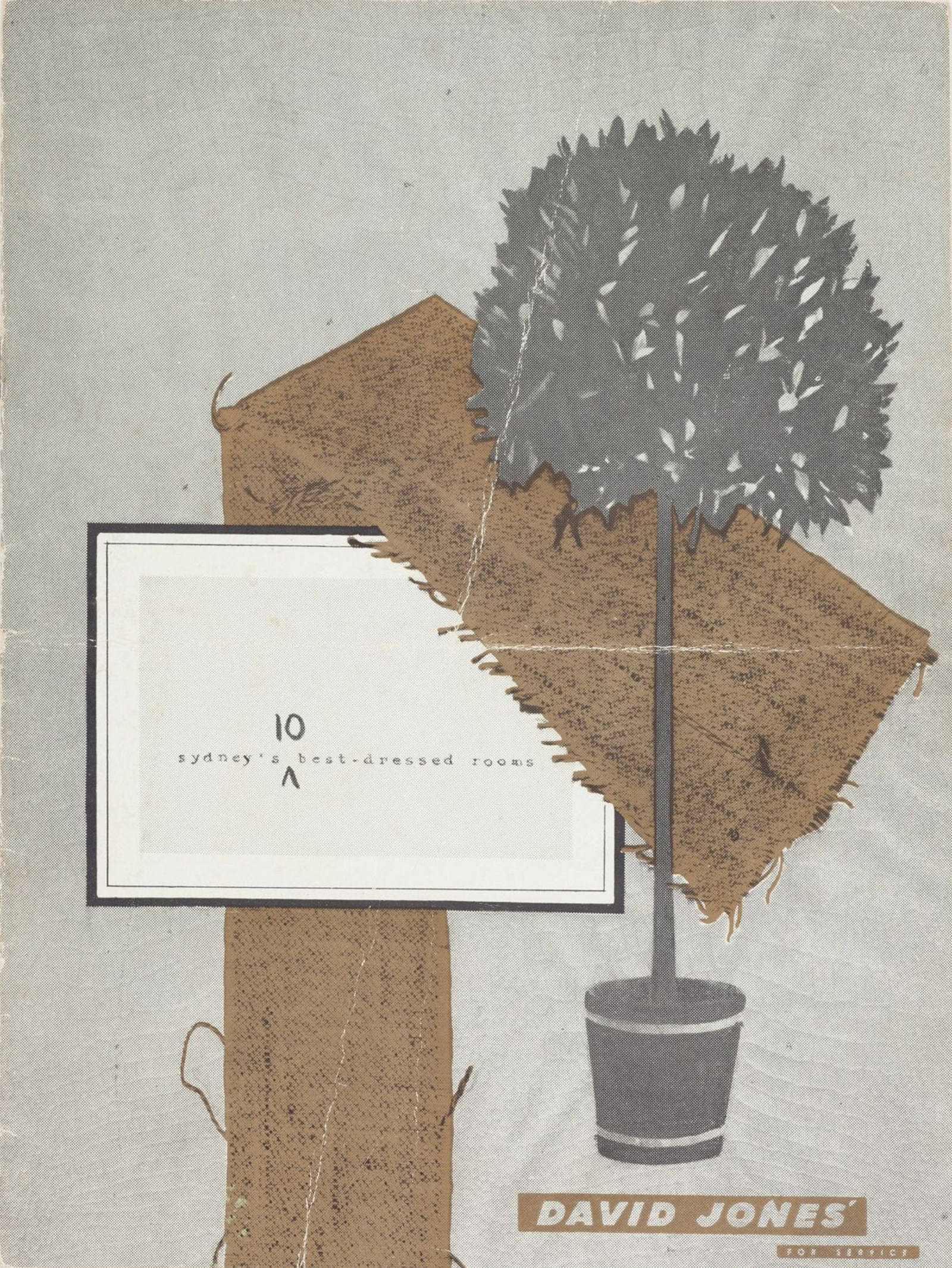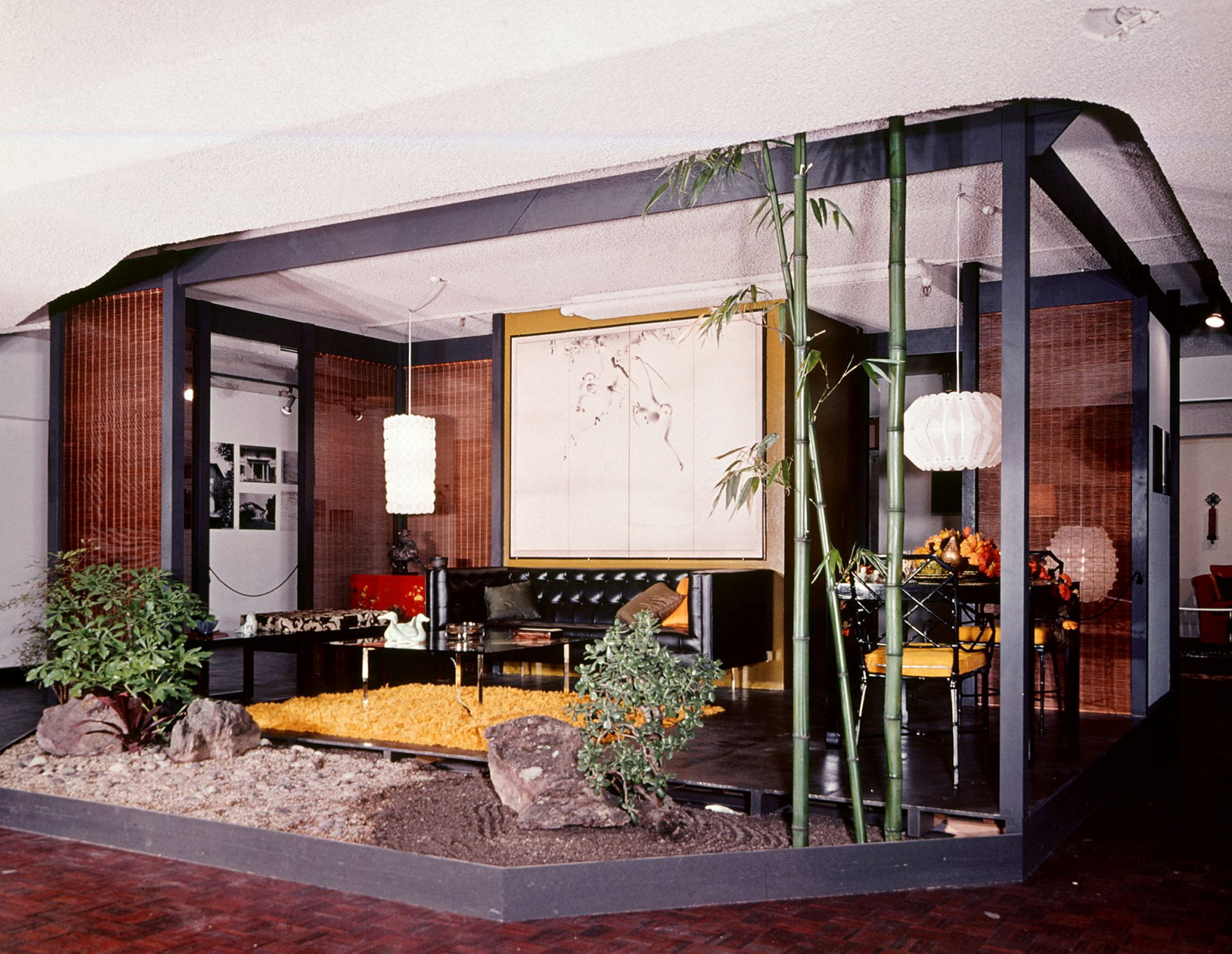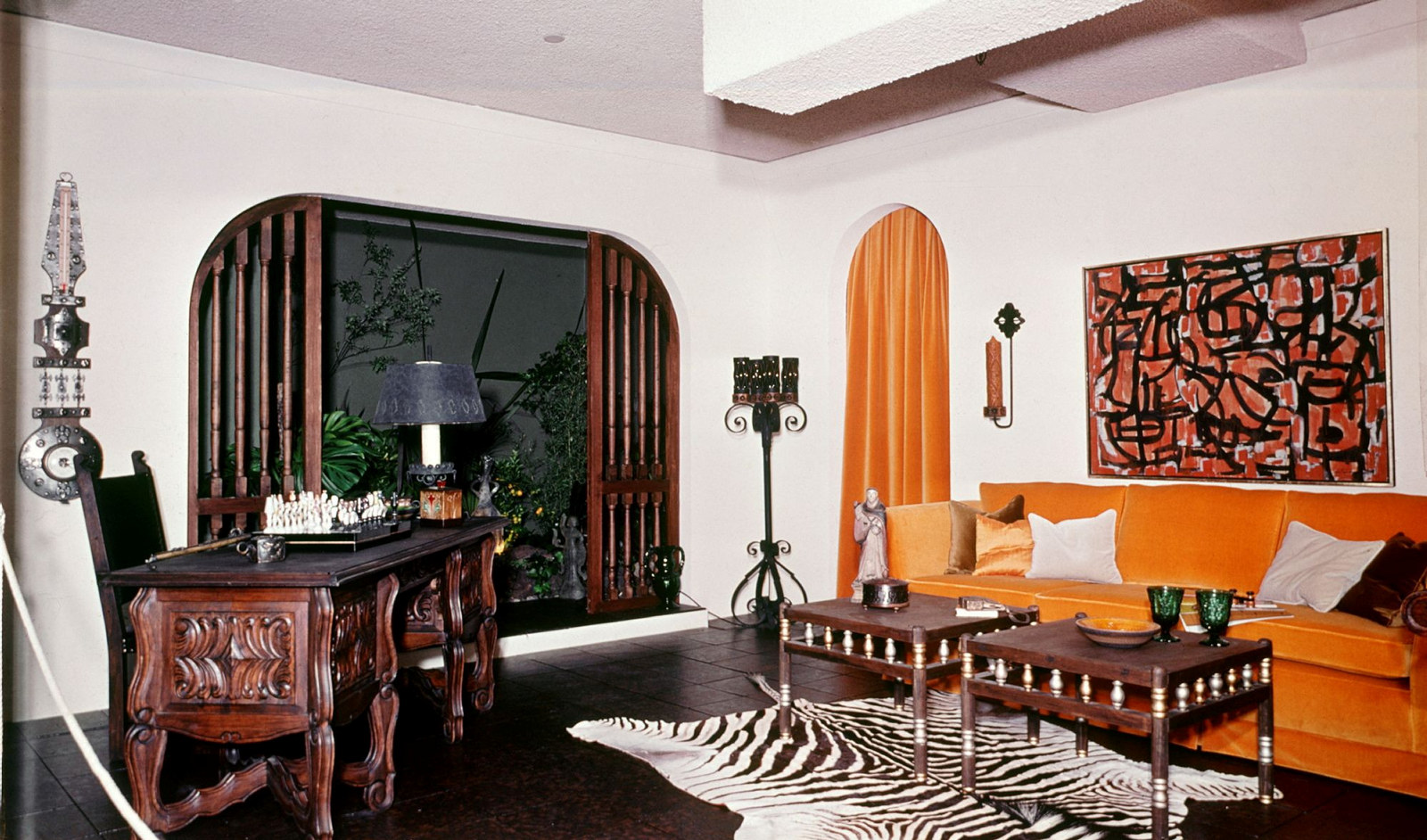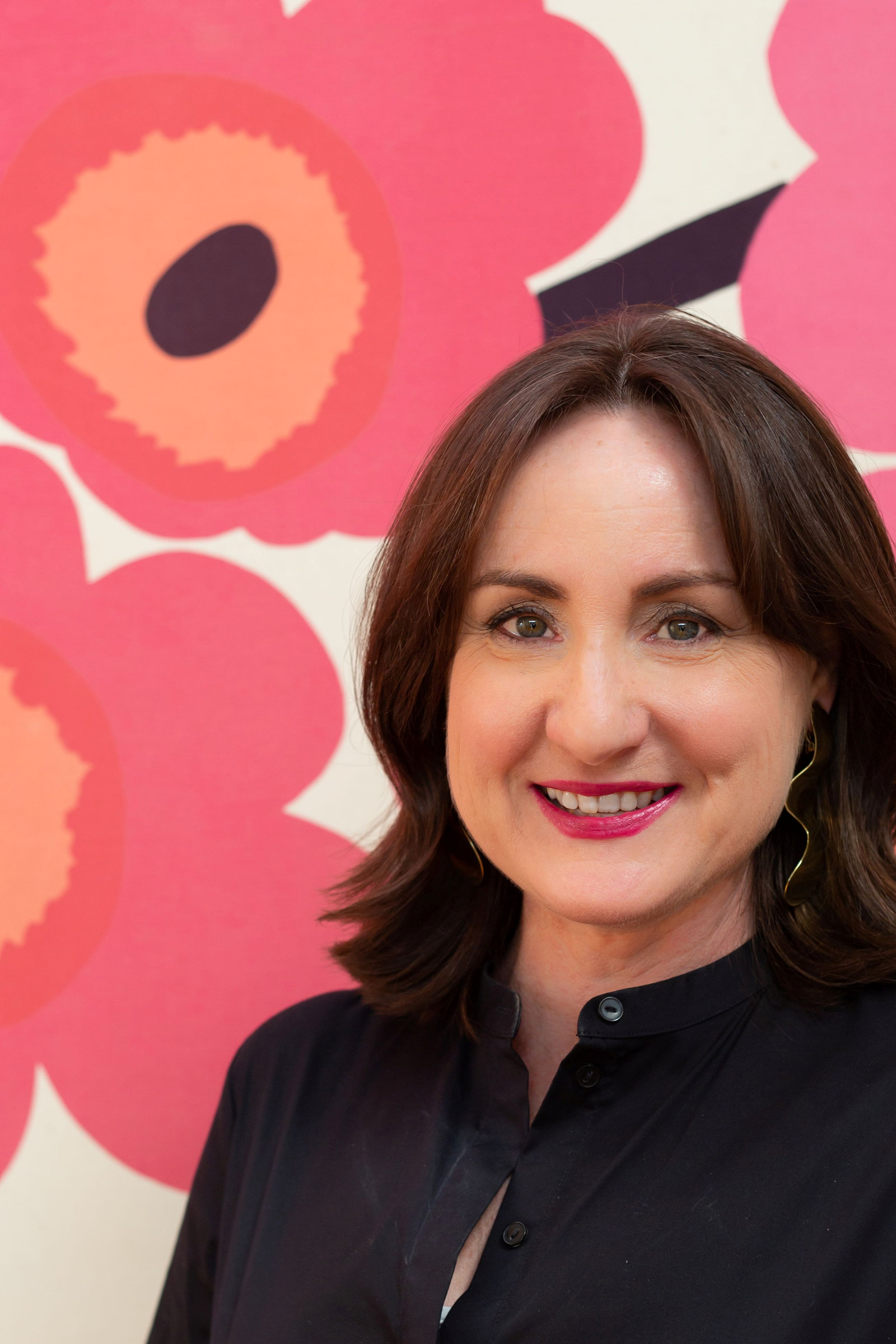Rooms on view: SIDA’s exhibitions, 1953-1986
From its inception, the Society of Interior Designers of Australia (SIDA) used exhibition rooms as an effective marketing and education tool. The ‘rooms’ were each designed by an individual SIDA member as an idealised space often for a named personality.
Such shows were not new to Sydney, but they were the first with the main aim of elucidating the work and professionalism of a group of interior designers practicing in Sydney, rather than promoting products and trade. They were popular, with estimates of visitors of over 1000 per day attending venues in major Sydney department stores and home centres.
The rooms had particular appeal in the post war era of home construction and furnishing, fulfilling for the visitor both a practical and aspirational need. Home makers looked for trends, consumers dreamed about how they might furnish given unlimited budgets, potential clients previewed designers’ work and visitors speculated on how the celebrity subjects might live in their lavish rooms. The press loved them and gave pages over to pictures and profiles of the designers and their subjects. Whether realistic or experimental, these exhibitions exposed thousands of viewers to the work of Australian designers and SIDA’s message of expertise and professionalism.
SIDA’s first exhibition in 1953 at the Woollahra Arts Centre probably came about because members’ skills made it a good vehicle for promotion. George Korody already had significant exhibition design experience in Europe.1 Marion Best and Margaret Lord2 had also staged rooms locally in the 1940s and several members listed exhibition design as their specialty in the catalogue. The first exhibition set the tone for the serious new society: the catalogue emphasised the members’ training, professionalism and independence as well as answering such questions as ‘What are interior designers and how do they work?’ and ‘If I use an interior designer, will my home look like me?’
The show included photographs and drawings to illustrate how a designer worked, models and renderings by East Sydney Tech students and flowers by Hera Roberts. A range of styles was represented including room settings by traditionalists Ruth Sloane, Cecily Adams and Stuart Low, as well as modern interiors by George Korody and Bruce Tebbutt. SIDA produced the show independently and rooms were imaginary spaces such as ‘Living Room of Today’. A ground breaking room by Marion Best, listed as a ‘Contemporary Study’ but ever after referred to as ‘The White Room’, was reported in the press as ‘electrifying’. The room ensured the success of the society’s launch, ‘really making the city sit up and take notice.’3
SIDA’s success saw them move to a bigger venue, Taubmans Galleries at North Sydney,4 for their 1955 exhibition. Little is known of this show though a highlight was Marion Best’s 12 x 9“setting for a living room. Best collaborated with artist Dora Sweetapple and Gordon Andrews created a dining table hanging on brass slings from the ceiling. A recent trip to the Milan Design Triennale in 1954 powerfully influenced all three in their use of colour and suspension. Once again, the press were intrigued and the exhibition rooms garnered publicity for the society.5
The 1960s and 70s were the heyday for large scale exhibition rooms by designers in Sydney. SIDA began its partnerships with charity committees in order to expand both the scale and profile of their exhibition rooms with nine members contributing to ‘Sydney’s Ten Best Dressed Rooms’, in 1962 at David Jones’ Art Gallery. Presented by The Silver Lighthouse Committee for the Royal Blind Society, SIDA felt the bite for the first time of the compromise necessitated by the partnership as the charity insisted on a non SIDA member, Tom Gillies, exhibiting and the Society lost its control over content and branding of the event. Five years later and SIDA was back on the front foot with naming rights for SIDA’s ‘Rooms on View’ exhibition at the Daily Telegraph Home Centre in Park Street.6 The president of the charity partner, the Black and White Committee of the Royal Blind Society, Mrs Marcel Dekyvere, wielded considerable influence over the selection of designers for this and the 1971 ‘Rooms on View’ at Farmer’s Blaxland Galleries.7 While SIDA wished to promote younger, fresh designers and offer a variety of styles for the public, Mrs Dekyvere ensured the high profile names such as Marion Best, Mary White, Merle du Boulay and Leslie Walford were selected, even managing to have Tom Gillies included on her personal insistence. This became the pattern for SIDA, leaving them space for only two or three new exhibitors.
Just as the charities recognised the value in ‘personality’ decorators, they introduced SIDA to ‘personality’ room subjects, though our contemporary notion of ‘celebrity’ may not align with the 1960s version. Rooms on View was populated with a diverse range - ballet dancers, art collectors, politicians, low key sports people and theatre actors - as well as faces from the social pages. It’s hard to imagine today’s equivalent of ‘A Country morning room for Mrs Michael White of "Belltrees Farm" Scone’ by Merle du Boulay Interiors. The designers planned these rooms to show their skill and style; not necessarily an accurate space for the ‘personality’ client. Some, like Leslie Walford, took his subject’s lifestyle into consideration and included their own possessions to add authenticity (Zara Holt and Bobo Faulkner). Marion Best took the opposite approach in making no attempt to create a realistic room – instead, the designs were her expression of her subject’s creativity– as in the case of Peter Sculthorpe. Some imagined rooms for big overseas stars, such as Merle Oberon or Mary Quant, were inlcuded to pique visitors’ sense of glamour – and perhaps in the hope the star might attend the exhibition. Opening night parties were filled with local ‘personalities’ and their by now well-known decorators; ticket sales and press coverage - which tended to alternate between gushing and provocative – followed.

SIDA’s final collaboration with a charity, this time the Cornucopia Committee at the Ten Best Dressed Rooms for 1973 was held in the new Podium Level of Centrepoint Tower.8 The 1973 show shed the personality subjects, the interiors themselves sufficient with their new flavour of youth and glamour like Ray Siede’s 'Private Jet for a Company Executive' and Kevin Hambly’s 'Master Bedroom for The “Now” Couple', while Barry Little’s 'Bathroom for a Liberated Wife' attracted much publicity.
Three years later SIDA staged a second exhibition at Centrepoint which marked a new phase for the Society as they celebrated their 25th anniversary independent of a charity partner, focussing their collaboration on publicity with Belle magazine. With greater control came greater risk and the ambitious exhibition of 25 rooms proved a financial disappointment and opportunity for reassessment for the Executive. The cost of participation to individuals and the society was high – as was the intensity of the subsequent scrutiny. SIDA took the lessons of 1976 into a new era of exhibition rooms in the 1980s, collaborating with sponsors such as Luxaflex. The 1980s saw SIDA, now comfortable in their professional standing, communicating a new message to their audience. No longer explaining their skills, having to justify their fees and communicate ‘this is what a decorator does’ and no longer invoking celebrity associations, the rooms had shifted to communicating a new relationship with their audience - it was a new type of aspiration: “this is the way forward, with new ideas and we the experts can show you”. SIDA’s last documented exhibition rooms, in 1986, including displays by then current President James Morland and a young Ann Brewer, were part of the much larger Australian Furnishings Expo, reflecting SIDA’s complete shift towards the commercial rather than the independent or charitable format.
SIDA’s exhibition rooms were significant in a number of ways. As part of the history of ‘model rooms’, they were unique in their professional association and effective, evolving brand. As a group this was their biggest stage to present a unified message as a profession. As such they were SIDA’s most important tool in the representation to the general public of the new profession as well as a valuable record of the work of a range of designers. For individuals it was an opportunity to present expressive, artistic installations relatively free of client restrictions. Real large scale clients were often extremely private and exhibition rooms offered an opportunity for unrestricted press promotion of their work and the development of ‘personality’ designers. Whether exhibitions, ‘Best dressed rooms’, or ‘Rooms on view’, SIDA’s exhibitions were photographed and reviewed in the press and thus represent a well-documented and significant phenomenon of 20th century interiors. They are also a highlight of these collections.
Footnotes
1. (Hungarian pavilion, Paris, 1937 and Spirit of France exhibition Sydney 1944 including “How French People Live’ display).
2. Marion Best had staged 7 Designers in 1947 at David Jones Art Gallery and contributed to An Englishman’s Home in 1941. (MAAS has pics and info). Margaret Lord had designed the interiors of the UK pavilion at the International Exhibition at the Showground in 1947.
3. Isla Brook, ‘Paging all women’, The Adelaide Mail, 5 September, 1953.
4. Taubman’s Gallery of Colour, 40 Miller St North Sydney, it closed on 15 April 1955.
5. Sun Herald 15 May 1955, colour supplement cover featured Best’s room.
6. Telegraph House, 9th Floor, Park St Sydney (Telegraph Home Centre), 31.10.67.
7. Rooms on View ’71, presented by the Black and White Committee of the Royal Blind Society to celebrate the 20th anniversary of SIDA, Blaxland Galleries, Farmer and Co, 13.9.71- 2.10.71.
8. The Cornucopia Committee presents Ten Best-dressed Rooms for 1973, by members of The Society of Interior Designers of Australia to aid the Children’s Medical Research Foundation. 24 November -16th December 1973, Podium Level, Centrepoint, Sydney.
Related
Browse all
SIDA: advocate and caretaker for a new profession
The Society of Interior Designers of Australian (SIDA) was a local expression of an international movement. The label ‘designer’ rather than decorator was used by a professional body as early as 1936 and SIDA saw itself as advancing the new profession

SIDA exhibitions: a full listing of designers and their display rooms
Between 1953 and 1986, the Society of Interior Designers of Australia (SIDA) staged nine exhibitions of model rooms, each room designed by an interior designer.
![Marion Best Pty Ltd: 'A room for Mr. Peter Sculthorpe' by designers Marion Hall Best and Deirdre Broughton, [Rooms on View 1971]](https://images.slm.com.au/fotoweb/embed/2023/02/62763ef4ccea407ab49734fd3b7795b5.jpg)
Finding aid: SIDA collection
The Society of Interior Designers of Australia (SIDA) was a professional body, founded in 1951, to represent the interests of interior designers in Australia. It promoted interior design to the general public and also set standards of practice for the profession
Published on
